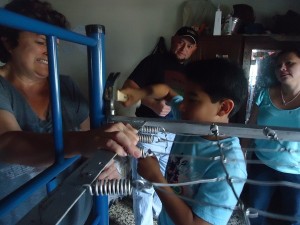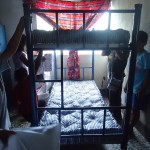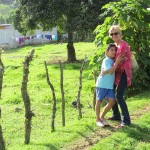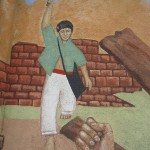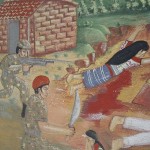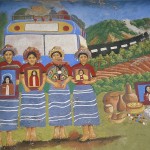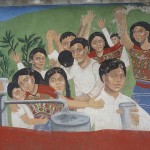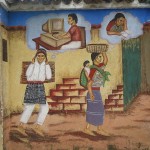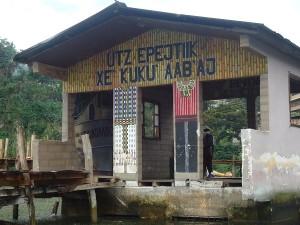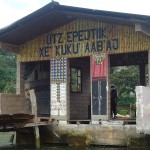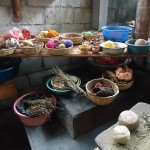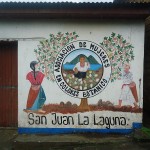Every few years on various Guatemalan adoption listserves, someone will post questions about the Certificate of Citizenship:
“Do we need one? How do we get it? My child is now 15. Am I too late????”
A recent flurry of such posts prompted adoptive father Tom Rawson to put in one place everything he knows about the Certificate of Citizenship (aka the CoC), which is a lot. He posted his compendium on The Big List, and with his permission, I’m reprinting it verbatim here. Thank you again, Tom. ~
Please note: The errors in spacing are mine, occurring somehow in the process of copying and pasting Tom’s notes. Apologies!
FROM TOM RAWSON:
Here is a guide to US citizenship and citizenship documents. This applies
to international adoptees to the US from Guatemala who have at least one
parent who is a US citizen.
[Note that I am not an immigration lawyer nor do I play one on TV — but I
have been explaining this for years, and I re-researched it before posting
this message. In other words, if you need legal advice ask a lawyer but
if you want the general lay of the land, I think this is it.
Please do NOT re-post this elsewhere without permission.]
(1) If the adoption was finalized in Guatemala AND both parents (or the
parent for a single-parent adoption) visited the child prior to the
finalization, then the child was issued an IR-3 visa (the type of visa is
shown in the entry stamp in the Guatemalan passport, and on the “green
card” if your child got one). These children MAY be readopted in the US,
but readoption is not generally required. For these children:
* If the child was born prior to February 28, 1983 s/he must apply
for citizenship (naturalization) using form N-400. Citizenship is
not automatic.
* If the child was born on or after February 28, 1983, AND entered
the US on or before February 26, 2001, AND resided in the US with
his/her parents on February 27, 2001, AND had not previously applied
for citizenship, then s/he automatically became a citizen on February
27, 2001. This provision was retroactive for all children who met
these conditions. To obtain a Certificate of Citizenship (CoC) the
parents (or the child if now over 18) must apply using form N-600.
* If the child entered the US between February 27, 2001 and December
31, 2003 then citizenship was automatic upon the child’s arrival in
the US. To obtain a CoC the parents (or the child if now over 18)
must apply using form N-600.
* If the child entered the US between January 1, 2004 and the present
then citizenship was automatic upon the child’s arrival in the US,
and the CoC was sent automatically to the parents. (Incidentally, for
these children there is a useful USCIS page at
http://tinyurl.com/o9x3ta6 explaining what to do about various
kinds of errors in the automatically-created CoC.)
(2) If the adoption was finalized in Guatemala BUT both parents (or the
parent for a single-parent adoption) did NOT visit the child prior to the
finalization, then the child was issued an IR-4 visa. These children MUST
be readopted in the US because, under the definitions used by US Customs
and Immigration Services, the adoption is not considered final in the US
because the parents did not “see and observe” the child prior to
finalization of the adoption in Guatemala. For these children:
* If the child was born prior to February 28, 1983 s/he must apply
for citizenship (naturalization) using form N-400. Citizenship is
not automatic.
* If the child was born on or after February 28, 1983, AND the US
readoption was completed on or before February 26, 2001, AND s/he
resided in the US with his/her parent(s) on February 27, 2001, AND
s/he had not previously applied for citizenship, then s/he
automatically became a citizen on February 27, 2001. This provision
was retroactive for all children who met these conditions. To obtain a
Certificate of Citizenship (CoC) the parents (or the child if now
over 18) must apply using form N-600.
* If the US readoption was completed between February 27, 2001 and the
present, then citizenship was automatic upon completion of the
readoption. To obtain a CoC the parents (or the child if now over
18) must apply using form N-600.
Additional notes:
– *Whether your child is a citizen* and *whether you have a CoC to
prove it* are not the same thing.
– Passports: A child who is a citizen can get a passport without
getting a CoC. They just have to prove citizenship to the passport
office. The documents required are similar to, but not exactly the
same as, those required for obtaining a CoC with form N-600. Once a
passport is acquired, it can be used as proof of citizenship in almost
all cases. However, as others have noted, the passport expires
whereas a CoC does not.
– Social Security:
For a child who is issued a Social Security card AFTER
becoming a citizen, the Social Security Administration (SSA)
records should show that child as a citizen, and no further
action should be required related to SSA and citizenship.
For a child who is issued a Social Security card BEFORE
becoming a citizen, SSA records will show that child as a
non-citizen. This can affect their ability to get work once
they turn 18, if not before. This status can ONLY be changed
by providing proof of citizenship to the Social Security
office. It is NOT affected automatically by later events such
as a readoption that triggers automatic citizenship,
application for a CoC, etc. — it is a separate record from
all that. Usually a passport suffices to prove citizenship
to SSA, but they have been known to interpret the rules
differently from office to office so some might require a CoC
(or if you have the option you can just try going to a
different office).
—
Tom



 ShareThis
ShareThis